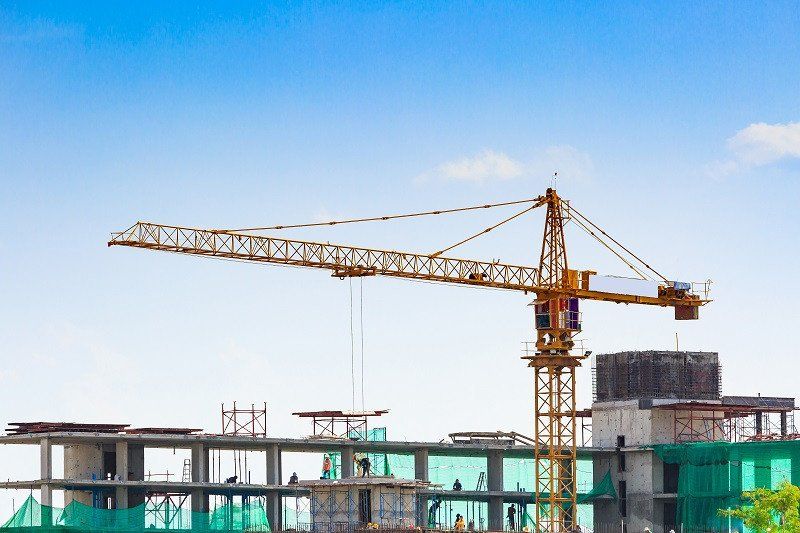Tourism in Malaysia: The Way Forward

Travelling is a much-loved activity worldwide, and many intrepid travellers plan their holidays six months to a year in advance just to prepare to explore a new country or have their adventure of a lifetime.
According to the Travel and Tourism Council, despite natural disasters, health pandemics, political instability and unpredictable shocks from terrorist attacks, travel and tourism continued to be resilient and robust for 2017. As long as governments continue to invest in essential infrastructure, the tourism subsector will remain strong.
Tourism has become a way to showcase Malaysia’s economic, cultural, social, environmental and heritage values and the subsector has evolved into a more important engine of economic growth.
Global tourism at a glance
Tourism is among the biggest and fastest growing sectors in the global economy, playing an important role in job creation, export revenue and domestic value added.
The Organisation for Economic Co-operation and Development (OECD) states that tourism directly contributes an average of 4.2% of gross domestic product (GDP), 21.7% of service exports and 6.9% of employment in OECD countries.
In the OECD Tourism Trends and Policies 2018 report, the inclusion of 49 OECD and partner countries provided a global perspective. The report revealed that international tourist arrivals increased to more than 1.2 billion in 2016, with arrivals to OECD countries constituting just over half and matching the global growth rate of 3.9% (compared to 2015).
The tourism economy is developing fast. New challenges and opportunities are presented by major long-term trends, such as digitalisation, growing demand, changing demographics and climate change, to name a few.

TRAVEL in Malaysia
The tourism subsector has been earmarked as one of the government’s focus areas, and an enabler for the transformation of Malaysia into a high-income nation.
In 2017, the Malaysia Tourism Promotion Board reported that there were 25.9 million international tourist arrivals.
In order to achieve tourist arrivals of 30 million by 2020, productivity is a vital factor that needs to be looked into.
Moreover, MICE (meetings, incentives, conventions, exhibitions) is a fast growing part of the global tourism industry. In 2016, Malaysia’s MICE industry attracted 111,298 delegates to 153 events, generating RM1.035bil in revenue.
In fact, business tourism is predicted to contribute RM3.9bil to gross national income and create 16,700 jobs by 2020.
“However, while our neighbouring countries such as Vietnam and Thailand are enjoying double digit growth in tourism arrivals, we are having a -3% growth in 2018. This could be due to many factors, which need to be determined,” says Uzaidi Udanis, Champion of the Tourism Productivity Nexus.
The Tourism Productivity Nexus was established in November 2017 and serves as a strategic platform to strengthen the working partnership between the government, private sector and tourism industry players with a common understanding to build the nation’s tourism industry.
Additionally, this partnership will look into generating more revenue for the country and increasing employment and business opportunities, with the ultimate objective of sustaining the productivity growth of Malaysia’s tourism industry as a whole.
MPC has been working to improve productivity in Malaysia for the past 25 years. Among its offerings include talks and workshops, training programmes, and advisory and consultancy services on productivity improvement. It also awarded grants and recognitions to organisations which conducted research projects related to productivity.
MPC has also developed benchmarking and best practices, researching the best ways to improve competitiveness and innovation in the country. To accelerate productivity growth, it launched the Malaysia Productivity Blueprint (MPB) in 2017. Nine priority subsectors were established, one of which is Tourism.
Changing trends
“The trends have shifted. Decades ago, a large chunk of tourist arrivals in Malaysia came from Europe, but now, tourists from China are dominating arrivals,” reveals Uzaidi, who is also the president of the Malaysian Inbound Tourism Association (MITA) and Malaysia Tourism Council (MTC).
“The preferences of tourists have changed as well. It’s not enough to ‘sell’ KLCC, Genting (Highlands) and Langkawi anymore. Because now, people want to go for the ‘experience’. So now, we are going towards that angle. It’s no longer about physical infrastructure. Infrastructure has now been relegated to a supporting role,” he added.
Developing new products is not easy because it requires a fresh perspective and new capital. Locals may be more accustomed to seeing traditional village houses and paddy fields, but for foreigners, these make up a novel experience, which contributes to the uniqueness of Malaysia on a global level.
“Over 10 years ago, we identified Sekinchan, which had a nice view, but there were no ground authorities to promote it for us. But there was a village cooperative and we started from there. Now, you can see the photos of Sekinchan shared on Instagram, and even (used for) wedding photos. It has become a photoshoot venue,” explains Uzaidi.
“We have homestays in Kuala Kurau, where locals would not think of building homestays. But that is the authentic ‘kampung’ complete with traditional paddy fields. But we must make sure we have good facilities in place.”
“People didn’t think that Seremban could become a tourist destination. We are positioning Seremban as a cultural destination. And it’s very near to KLIA (Kuala Lumpur International Airport), and we can encourage the transit passengers to join a short tour. They can go to Seremban for some food experience and a cultural show. And maybe, they will come back.”
The momentum and the interest had to be sustained. Therefore, a programme that attracts visitors and gets them to return many times over, was required.
Going state by state
The Tourism Nexus is now in the midst of conducting a series of roadshows in every state. The roadshow consists of two parts – showcasing new tourism products and organising a forum, which serves as a platform for industries to discuss their issues and challenges, and highlight best practices.
“To showcase new products, we bring the industry players to a location, where we gather them to have business networking or matching sessions. For example, if they go to Seremban or (anywhere in) Negeri Sembilan, they might find out there’s a new yacht, ostrich farm, etc,” says Uzaidi.
“Through the forum, we want to find out the vision of the local players, authorities, and the states. Then, we can assist them from the industry point of view. What is the perception among the industry players? What are the challenges for us to promote the new place?”
According to Uzaidi, upcoming roadshows this year are set for Sabah and Sarawak.
Remaining competitive
For Visit Malaysia Year 2020, the government has set the target of 30mil tourist arrivals and an estimated RM100bil in earnings.
Tourism and the preference of tourists have evolved over the decades to include a variety of tastes and styles. This industry has also become highly competitive.
“Airbnb and other similar digital platforms are part of disruptive technology – is it a competitor or support system? We can’t stop them, so we have to change. It may be an advantage for the industry, but it has to be on the same level playing field. The whole world, including governments are trying to cope and keep up,” says Uzaidi.
“A representative from Airbnb said that they were willing to do what the government wanted them to do, but please be specific. I’m willing to pay tax, but to whom? I’m willing to register, but with whom? They are big and they want to be legal here in Malaysia. So, they are willing to comply with regulations, terms and conditions.”
Not only tour agencies and the government should promote Malaysia, but even the average person can promote Malaysia through their social media, and show their friends overseas what they can see and experience here in Malaysia.
Business
Tags: Growth, Business Model, Worldview





